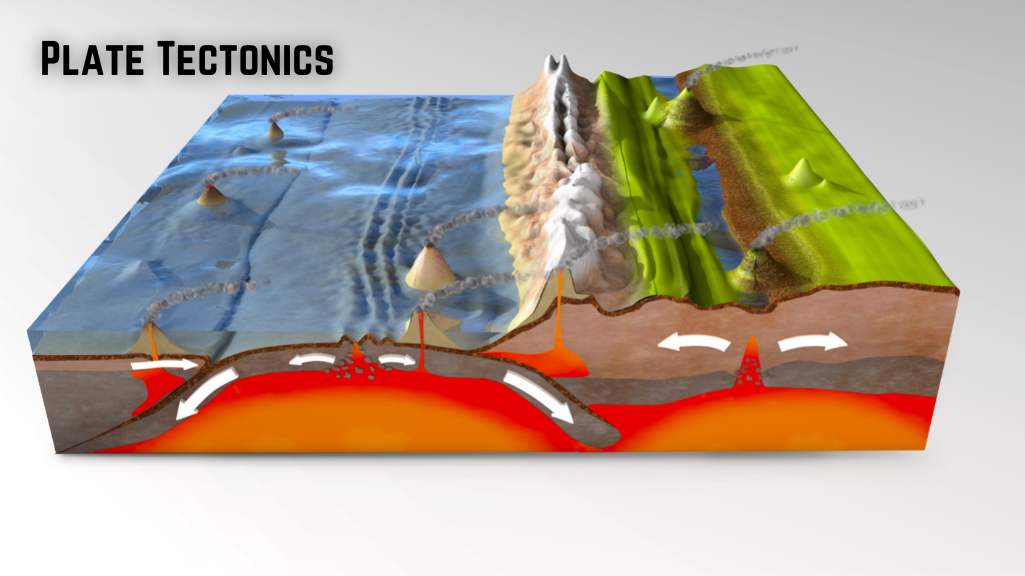Plate Tectonics: The Dynamic Movement of Earth's Surface
Swati Mandana
. 2 min read
As more time has passed, scientists have come to the conclusion that tectonics is the primary agent behind the majority of the climatic shifts that our planet has experienced over the course of geological time. Continents move away from one another at a rate of millimeters per year, which causes them to fragment into smaller pieces and run into each other. With the aid of modern technology, such as video chat, scientists and researchers from different parts of the globe can collaborate and share their findings in real time. Through video chat discussions and virtual conferences, they can exchange data, theories, and observations, enabling a deeper understanding of the complex relationship between tectonic movements and global climate patterns.

Explain the Concept of Plate Tectonics
Plate tectonics is a scientific theory that attempts to explain the formation of major landforms on Earth as a result of the movement of the Earth's tectonic plates. The theory, which was established in the 1960s, had a profound impact on the field of earth sciences because it provided an explanation for a wide variety of occurrences, such as those involving the formation of mountains, earthquakes, and volcanoes.
What are the Reasons Behind the Shifting of Tectonic Plates?
The movement of plates has been hypothesized to be caused by three distinct mechanisms by scientists. One of these is known as mantle convection. Convection is the movement of materials in currents brought about by differences in heat and density between the materials. During the process of convection, heated particles start to circulate, and as they do so, the hot particles rise to the top of the system while the cold particles sink to the bottom.
What are Some of the Consequences of the Shifting of Tectonic Plates?
1. Over the course of millions of years, the movement of these plates has shifted the position of the continents and altered their size.
2. The evaluation of the present-day land form features of India was impacted as a result of these movements.
3. The shifting of tectonic plates is responsible for the formation of a mountain range.
4. Earthquakes and other natural disasters are caused by this process.
Tectonic Plates Creates Earthquakes, Volcanoes & Mountains
According to the tectonic theory, the surface of the Earth is dynamic and can move as much as 0.5 to 1.3 centimeters each year. The numerous tectonic plates continuously shift and communicate with one another. It takes millions and millions of years for something like this to happen. Volcanoes come into existence as a result of the movement of tectonic plates.
Conclusion
Overall, plate tectonics is a crucial concept in the field of earth sciences that explains how the movement of tectonic plates has influenced the formation of major landforms on Earth, such as mountains, earthquakes, and volcanoes. This process has also had significant consequences, including the shifting of continents and the formation of Pangaea, an ancient supercontinent that existed millions of years ago. As our understanding of plate tectonics continues to evolve, it will undoubtedly contribute to our understanding of the Earth's history and the natural processes that continue to shape our planet today.
More Stories from
Zero-Waste Living: Practical Tips for Reducing Environmental Impact
Discover the power of zero-waste living as this article offers practical tips and actionable advice for reducing your environmental impact.
Terrace Farming: Beautiful Terraced Landscapes from Around the World
This article explores terrace farming, an agricultural technique utilized in hilly or mountainous environments to prevent soil erosion and reduce water flow.
Unveiling India's Volcanic Secrets: A Geological Overview
Explore India's unique volcanic history and the enduring forces of nature that continue to captivate scientists and adventurers alike.
Eco-Friendly Practices: How Individuals and Businesses Can Make a Difference
Discover the Power of Eco-Friendly Practices: Learn how individuals and businesses can contribute to a greener world by adopting sustainable measures.
Biotechnology and the Future of Medicine: Advancements and Ethical Concerns
This article explores precision medicine's personalized treatments, the promise and ethical challenges of gene editing, the potential of artificial intelligence in healthcare, and the future of organ transplantation.










.png?width=40&aspect_ratio=1:1)


.png?width=40&aspect_ratio=1:1)